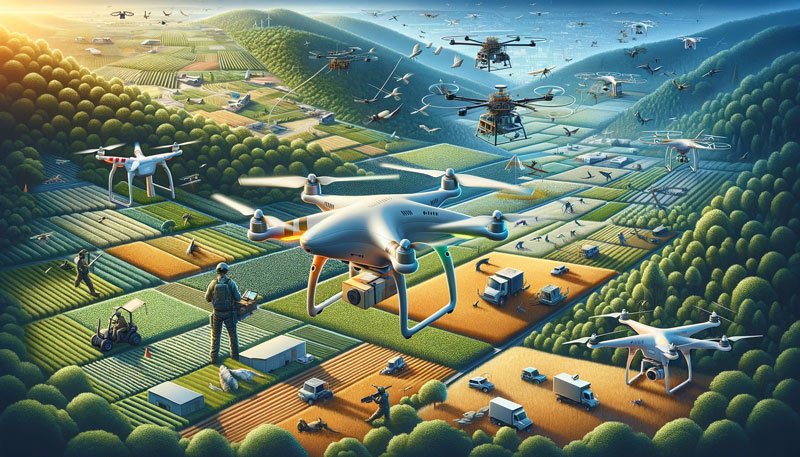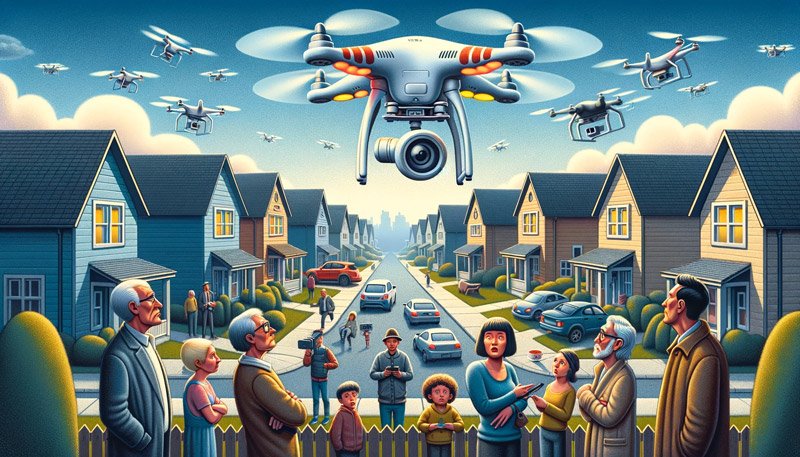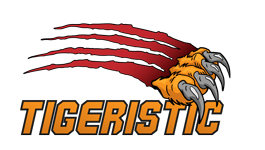In our exploration of modern aviation marvels, we often encounter the term “drone” with its broad implications and transformative capabilities.
At its core, a drone definition encompasses any unmanned aircraft operating without a pilot on board. These technological wonders, rooted deeply in drone history, began as simple remote-controlled aerial vehicles and have rapidly evolved into sophisticated tools that serve a multitude of purposes.
Nowadays, the drone uses extend across a spectrum that blends hobbyist interests with critical commercial operations.
From capturing breathtaking aerial photography to supporting vital agricultural assessments, drones have irrevocably altered how we interact with our skies.
As we delve deeper into the realm of UAVs, we uncover the layers of their functions and the ingenuity behind their operation.
Table of Contents
- Key Takeaways
- Understanding Drone Technology
- The Evolution and History of Drone Development
- Essential Functions and Capabilities of Drones
- Drone Applications Across Different Industries
- Regulations and Legal Considerations for Drone Operators
- FAQs About What Is a Drone
- What exactly is a drone and how is it defined?
- Could you explain how drones work?
- What are the latest advancements in drone technology?
- What different types of drones are there?
- How has drone technology evolved over the years?
- What are some essential functions and capabilities of drones?
- Can drones be used for agricultural purposes?
- How are drones utilized in construction and public safety?
- What regulations should drone operators be aware of?
- How do privacy concerns affect drone use?
Key Takeaways
- A drone is classified as an unmanned aircraft operated without a pilot onboard.
- Their origins stem from military innovations but have since expanded into various civilian sectors.
- Drone applications range from leisure activities like photography to significant roles in industry operations.
- Understanding drones is key to appreciating their impact and potential in society.
- As drone technology advances, so does the way we consider airspace usage and related regulations.
Understanding Drone Technology

As we unravel the intricacies of drone technology, it becomes clear that these unmanned aircraft are not just feats of engineering but also harbingers of the future.
They embody innovation within the aviation field, providing a glimpse into what the sky’s limits hold with their ever-expanding capabilities.
Let’s immerse ourselves in the basics of their operation, the strides being made through advancements and the diverse types that serve a myriad of purposes in the drone industry.
The Basics of How Drones Work
Drones, at their most fundamental level, rely on aerodynamics, just like any traditional aircraft. Multirotor drones, for instance, use their multiple propellers to create lift and precise control in all three dimensions.
A drone’s onboard systems, which might include GPS, inertial measurement units, and sometimes sensors for obstacle detection, play pivotal roles in flight stabilization and navigation.
Advancements in Drone Technology
The drone industry is in a constant state of evolution with drone advancements pushing the limits of what these machines can achieve.
Enhanced battery life, improved communication systems for longer range, and more sophisticated AI for autonomous operations are examples of such progress.
With these improvements, drones are becoming increasingly intuitive and capable of complex tasks, reducing the need for human intervention.
Types of Drones: Multirotor, Fixed-Wing, and Single Rotor
Drones come in various designs, each tailored for specific tasks and environmental conditions.
Multirotor drones, encompassing quadcopters and hexacopters, are known for their versatility and stability, making them perfectly suited for photography and inspection tasks.
Fixed-wing drones, resembling traditional airplanes, offer greater range and speed, ideal for surveying large parcels of land.
Lastly, single-rotor drones, similar to helicopters, provide longer flight times and the ability to carry heavier payloads, hence they are often employed in areas such as agriculture or delivery services.
| Type of Drone | Characteristics | Common Uses |
|---|---|---|
| Multirotor | Stable hover, VTOL, multiple propellers | Aerial photography, inspections, hobbyist activities |
| Fixed-Wing | Efficient long-range flight requires runway | Agricultural surveying, environmental monitoring |
| Single Rotor | Longer flight times carry heavier loads | Delivery services, search and rescue operations |
The Evolution and History of Drone Development

The journey of drone technology is a fascinating tale of transformation, from rudimentary beginnings to the complex systems in use today.
Our shared history with drones begins in the military sector, where the necessity for stealth and the minimization of human risk on the battlefield gave rise to the initial conceptualization and utilization of unmanned aerial vehicles (UAVs).
Drone history is marked by several pivotal moments, where the advancement of technology and inventive applications have reinvented their roles within society.
Notably, drones took a dramatic turn from their militaristic birth towards a myriad of peaceful and productive drone applications across multiple sectors. This progression has solidified drones as pivotal assets in commercial, environmental, and recreational realms.
As we chronicle the evolution of drones, we emphasize the milestones that have helped propel drone evolution from tactical instruments to widespread civilian tools:
- The initial deployment of drones for reconnaissance missions, paving the way for their advancement in the military.
- The transition to non-military use with applications in disaster management and surveillance opens new possibilities beyond combat.
- Breakthroughs in battery life and flight capabilities enabled longer, more efficient flights.
- The advent of consumer-friendly models brought drones into the hobbyist domain and media production.
- The expansion into sophisticated commercial applications drives innovation in sectors like agriculture, logistics, and urban planning.
In recent years, increased accessibility and decreased cost have seen drones become a prevalent tool across multiple industries, transforming how we execute tasks and view aerial innovation.
We have witnessed drones becoming crucial in emergency response, infrastructure inspection, and even delivering medical supplies to remote regions.
Let’s explore some significant technological breakthroughs that have steered this remarkable evolution:
| Year | Breakthrough | Significance |
|---|---|---|
| 2000s | Introduction of GPS navigation | Enhanced flight accuracy and autonomous capabilities |
| 2010s | Commercial drones have become mainstream | Broader adoption for photography, videography, and recreational use |
| Mid-2010s | Advancements in sensor technology | Improved safety and autonomy with obstacle avoidance systems |
| Late 2010s | Development of heavy-lift drones | Opened new opportunities in logistics and delivery services |
| 2020s | Integration of artificial intelligence (AI) | Autonomous drones capable of complex tasks and decision-making |
In essence, the narrative of drone history is one of ceaseless innovation and ingenuity, leading us to a present where drones are not just novelty items or military hardware but fundamental components of our technological landscape.
We stand at a juncture where we can anticipate further transformative shifts in drone capabilities, ensuring an exciting horizon for drone applications and their role in our future.
Essential Functions and Capabilities of Drones

Our modern world has been dramatically reshaped by the advent of drones, reflecting a leap in innovation that integrates drone navigation, drone autonomy, aerial photography, and payload delivery.
These functionalities are reshaping diverse sectors, from media production to logistics, highlighting the indispensable nature of drones in today’s technological ecosystem. We will now delve into the core abilities that drones offer, underscoring the transformative impact they have on various professional fields.
To understand the rising efficiency in drone operations, look no further than the strides made in drone navigation systems. These sophisticated frameworks empower drones with pinpoint accuracy and the remarkable capacity for autonomous flight paths.
Equipped with advanced sensors and GPS technology, drones can autonomously navigate complex environments, drastically reducing operator workload and paving the way for innovations in autonomous flight and real-time data capture. The high-level autonomy that drones possess is not just a convenience; it’s a pivotal enhancement that amplifies their functionality in countless applications.
Aerial Photography and Videography
Drones have revolutionized the realm of aerial photography and drone videography, providing us with the ability to capture stunning visuals from vantage points previously unimaginable.
They give photographers and filmmakers the tools to create aerial shots that add remarkable dimensions to their work, pushing the boundaries of visual storytelling.
The deft agility and stability of drones ensure that even in the most challenging conditions, whether whisking across rugged landscapes or hovering amidst cityscapes, they can reliably secure high-quality footage.
Payload Carrying and Delivery
The concept of payload delivery is a testament to the versatile nature of drones. With the capacity to carry various loads, drones are rapidly becoming a go-to solution for innovative delivery services.
From delivering medical supplies to inaccessible areas to offering logistic solutions in urban zones, these airborne couriers are forging a new path of inefficient, eco-friendly transport.
The ability to bypass traditional ground-based obstacles represents a quantum leap in payload delivery, with drones leading the charge in a rapidly evolving delivery landscape.
Drone Applications Across Different Industries

The transformative impact of drone technology is starkly visible across various industries, where it promotes enhanced efficiency, improved safety, and comprehensive data collection.
We take a closer look at how drones are tailored to specific tasks within agriculture, construction, and public safety, revealing a new dimension of operational agility and intelligence.
Agriculture: Surveying and Crop Monitoring
Within the agricultural sector, drones are revolutionizing practices by providing detailed surveying and crop monitoring services.
With agriculture drones, farmers can access real-time data on crop health, soil conditions, and irrigation needs.
These high-flying sentinels offer invaluable insights that lead to informed decisions, smarter resource management, and ultimately higher yields.
Construction: Mapping and Inspection
In construction, drone services are critical in transforming site mapping and structural inspections. Construction drones swiftly navigate over complex landscapes to create detailed maps and conduct thorough inspections, which would otherwise be time-consuming and hazardous for human surveyors.
Their aerial perspectives facilitate real-time monitoring of projects, enhancing precision while ensuring the safety of workers.
Public Safety: Search and Rescue Operations
Drones serve as indispensable tools for public safety, particularly in time-sensitive search and rescue operations.
Public safety drones, equipped with high-resolution cameras and thermal imaging, provide rapid assessment of disaster-stricken areas and assist in locating individuals amidst challenging terrains.
The swift deployment of search and rescue drones often proves crucial in saving lives and expediting responses to emergencies.
Regulations and Legal Considerations for Drone Operators

In the realm of aerial innovation, drone operators must navigate a complex web of regulations to ensure the legal operation of their UAVs. As we embrace the burgeoning capabilities of drones, it’s imperative to stay apprised of the evolving legislative framework.
Focusing on compliance with drone regulations not only fosters safe skies but also upholds the credibility of the drone industry.
Understanding FAA Regulations
The Federal Aviation Administration (FAA) serves as the governing body for FAA drone rules, detailing specific guidelines that dictate every aspect of drone flight and management.
These rules encompass a range of operational protocols, including registering drones, securing necessary certifications, and adhering to airspace restrictions.
For commercial operators, understanding and complying with these regulations is crucial. Abiding by the FAA’s standards ensures that all drone activities, from simple hobby flights to complex commercial tasks, are conducted safely and responsibly.
Privacy Concerns and Ethical Use
Beyond the technicalities of regulation lies a landscape rife with privacy concerns and the call for drone ethical use. The potency of drones in capturing images and videos from above introduces delicate issues regarding privacy intrusion.
Responsible drone use mandates that operators respect individual and community privacy, navigating the delicate balance between innovation and ethical practice.
Whether for recreational or commercial purposes, we, as drone enthusiasts and professionals, must champion the tenets of respect and privacy to promote a sustainable integration of drones into everyday life.
FAQs About What Is a Drone
What exactly is a drone and how is it defined?
In its simplest terms, a drone is an unmanned aerial vehicle (UAV), which can be controlled remotely or autonomously to follow a pre-programmed path.
Drones come in various shapes and sizes and can serve a diverse range of purposes, from leisurely activities, like photography, to more critical applications, such as emergency response services.
Could you explain how drones work?
Drones operate using a combination of aeronautical engineering, wireless technology, and GPS. They have onboard processors, sensors, and communication systems that allow them to navigate and be steered from a remote location or autonomously via software.
Multirotor drones, for instance, use multiple propellers to achieve vertical lift and in-flight maneuverability.
What are the latest advancements in drone technology?
Advancements in drone technology encompass improvements in battery life, propulsion systems, automated flight paths, collision avoidance systems, and enhanced data processing capabilities.
They also include the integration of artificial intelligence and machine learning for better autonomy and responsiveness to environmental conditions.
What different types of drones are there?
The primary types of drones include multirotor drones, which are great for stability and control; fixed-wing drones, which excel in long-duration flight over large distances, and single-rotor drones, which are similar to helicopters and can carry heavier payloads. Each type of drone is designed for specific use cases and applications within the drone industry.
How has drone technology evolved over the years?
Drone technology has evolved from rudimentary remote-controlled aircraft to sophisticated devices capable of complex tasks.
The evolution includes transitioning from exclusive military use to widespread civilian applications, significant improvements in size, capability, and autonomy, and expanding the drone market for various drone services.
What are some essential functions and capabilities of drones?
Drones offer a wide array of functions and capabilities, such as advanced navigation and real-time data streaming for precise maneuvers, high-quality aerial photography and videography for creative and commercial work, as well as payload carrying ability for deliveries and logistics.
Can drones be used for agricultural purposes?
Yes, drones have found significant applications in agriculture for surveying lands, monitoring crop health, and precisely distributing pesticides and fertilizers.
This helps in saving time, reducing costs, and increasing crop yields through better farm management practices.
How are drones utilized in construction and public safety?
In construction, drones are used for mapping, surveying, and inspecting sites to enhance planning and monitor progress.
Public safety agencies use drones for search and rescue operations, assessing disaster-hit areas, and managing crowd surveillance to promote safety and quick response in emergencies.
What regulations should drone operators be aware of?
Drone operators should familiarize themselves with the FAA regulations that govern the use of drones in national airspace, including registration requirements, altitude restrictions, no-fly zones, and rules for commercial versus recreational usage. Complying with these regulations helps in ensuring safe and lawful drone operations.
How do privacy concerns affect drone use?
With the ability to capture images and videos from above, drones raise privacy concerns related to unauthorized surveillance and data collection.
Ethical use of drone technology involves respecting privacy norms and abiding by laws that protect individual rights against unwanted aerial observations.


